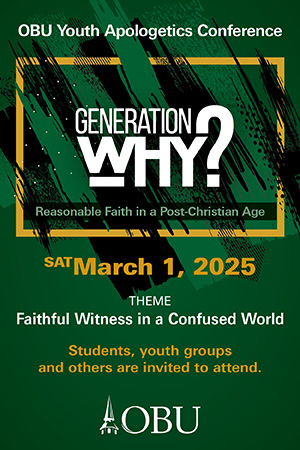According to a 2010 report, an average of 60.1 percent of the population in Oklahoma is considered lost.
In 1960, the Baptist General Convention of Oklahoma (BGCO) claimed one church for every 1,760 people. By 2011, the ratio had fallen to one church for every 2,085 people in Oklahoma.
“To keep up with population gains and dying churches, we have to plant 60 churches a year to maintain that average,” said Jim Brunk, BGCO interim church planting specialist. To do that successfully, the BGCO Church Planting group spent 2014 creating and preparing a new strategy which includes new training material and an eye-catching logo.
The Church Planting New Paradigm, introduced at the 2014 BGCO Annual Meeting in November, moves the church planting strategy from a planter-driven approach to a partner-focused tactic. No church is to be planted through the BGCO without a primary partner and association endorsement. The new paradigm includes the addition of a church planting strategist to work specifically with associations to discover church planting needs around the state.
“The most significant need is church planting pastors, and one of the best resources to discover those who are called is through the local association,” stressed Randy Proctor, BGCO church planting strategist.
To assist associations and churches with their planting needs, church planting strategists are conducting multiple trainings across the state this year. The first took place on Jan. 15. Twenty association representatives and pastors attended assessment training at the Baptist Building in Oklahoma City, kicking off what the church planting group hopes will be a very successful training year.
“This training helped me understand the new paradigm and how it works,” commented Don Jones, an International Mission Board (IMB) missionary working with planters in East Africa, who attended the training. Other trainings that will be available to churches and associations include Churches Planting Churches, designed to help churches create a strategy for planting, and which will take place in February, March, and April in local churches across the state.
In addition to working closely with the associations and churches, the primary partners, the new paradigm also focuses on the emotional and spiritual health of the planter. All planters funded under the new paradigm will be required to meet with a mentor, a coach, and a network of planters regularly.
“Having a mentor, coach, and network creates relational synergism for planter success,” said Sam Scott, BGCO church planting strategist.”
By requiring a support team for the planter, the Church Planting Group aims to not only meet the needs of the planter, but also ensure a healthy and successful church start.
By changing the strategy and equipping associations and churches through training, Church Planting is on track to plant strategic, healthy, and reproducing Baptist churches in 2015. Churches, associations, and those interested in planting a church or attending one of the trainings should contact the BGCO Church Planting office at 405/942-3000, ext. 4310, or find more information at www.oklahomachurchplanting.com.






